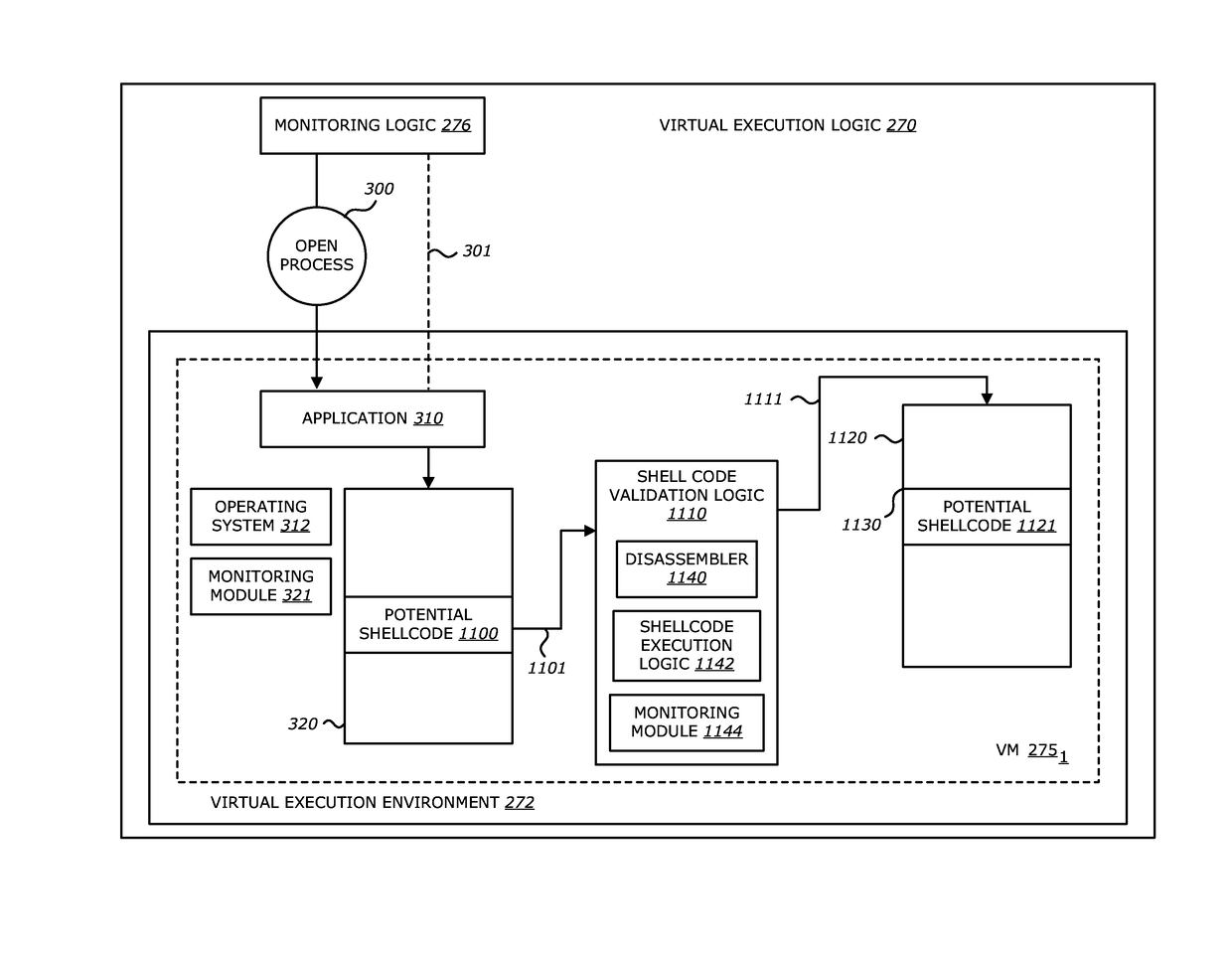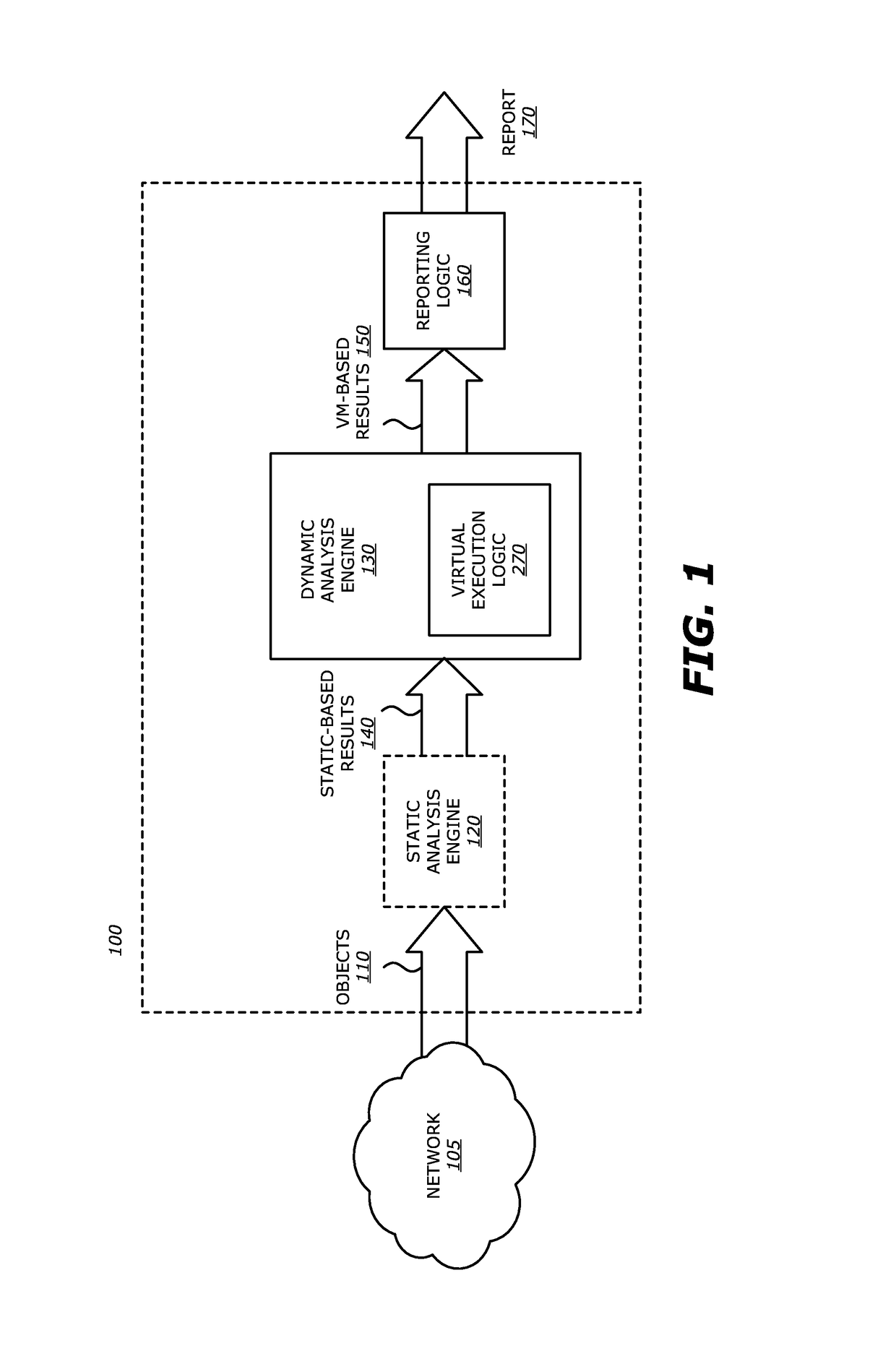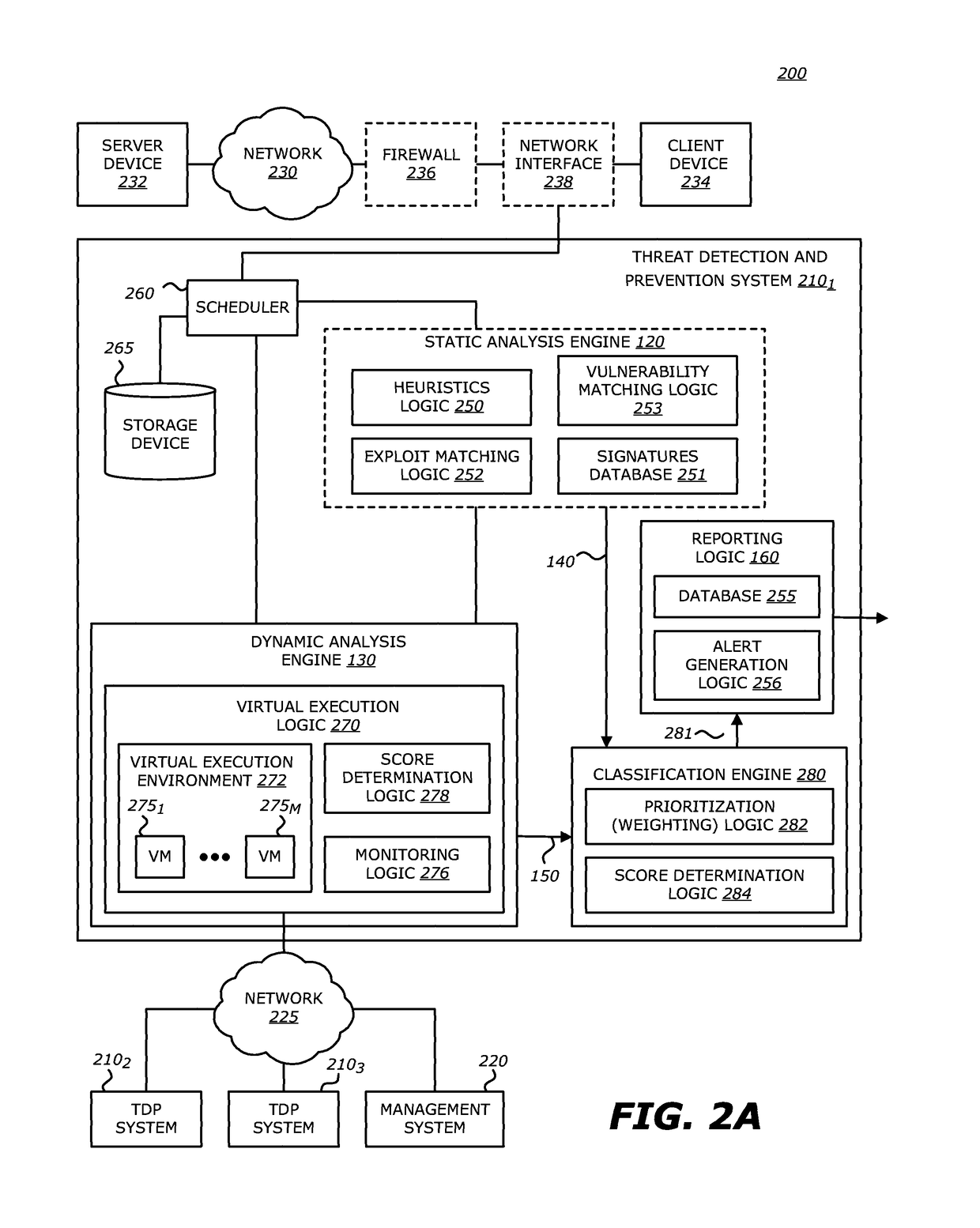Shellcode detection
a shellcode and detection technology, applied in the field of cybersecurity, can solve the problems of influencing or attacking normal operations, network devices will continue to be targeted for malware attacks, and the effect of pervasive problem of malicious softwar
- Summary
- Abstract
- Description
- Claims
- Application Information
AI Technical Summary
Benefits of technology
Problems solved by technology
Method used
Image
Examples
first embodiment
A. TDP System Deploying Heap Spray Detection Logic and Shellcode Validation
[0109]Referring to FIG. 11, an exemplary block diagram of a virtual execution logic configured with shellcode validation logic is shown. Herein, the virtual execution logic 270 includes the monitoring logic 276, a shellcode validation logic 1110 and the virtual execution environment 272 which includes VM 2751. In one embodiment, the virtual execution logic 270, as illustrated in FIG. 11, may be incorporated into a TDP system such as TDP system 2101 of FIG. 2A. In the embodiment where the virtual execution logic 270 of TDP system 2101 includes the shellcode validation logic 1110, the monitoring logic 276 conducts an in-depth analysis of at least one object of the incoming objects 110 by instantiating (creating an instance of) and executing an application to virtually execute the object and analyzing behavior of the object during virtual execution.
[0110]Before analysis in the VM 2751 begins, the monitoring logi...
second embodiment
B. Network Device Deploying a Heap Spray Detection Logic and Shellcode Validation
[0119]According to an alternative embodiment of the disclosure, a network device may be configured to implement at least a monitoring logic independently of a separate physical device wherein the monitoring logic implements a heap spray detection logic and a shellcode validation logic. Referring to FIG. 13, a network device 1300 is shown to incorporate the virtual execution environment 272 including the VM 2751. In FIG. 13, the network device 1300 is represented by, as an illustrative example, a tablet 1300. The tablet 1300 includes a display screen 1315, an antenna 1311 and monitoring logic 1020. The monitoring logic 1020 includes heap spray detection logic 1021 which monitors the behavior of applications from within the tablet 1300.
[0120]As discussed above, the heap spray detection logic 1021 performs function call hooking in order to observe API calls and / or system calls. In the embodiment illustrate...
PUM
 Login to View More
Login to View More Abstract
Description
Claims
Application Information
 Login to View More
Login to View More - R&D
- Intellectual Property
- Life Sciences
- Materials
- Tech Scout
- Unparalleled Data Quality
- Higher Quality Content
- 60% Fewer Hallucinations
Browse by: Latest US Patents, China's latest patents, Technical Efficacy Thesaurus, Application Domain, Technology Topic, Popular Technical Reports.
© 2025 PatSnap. All rights reserved.Legal|Privacy policy|Modern Slavery Act Transparency Statement|Sitemap|About US| Contact US: help@patsnap.com



